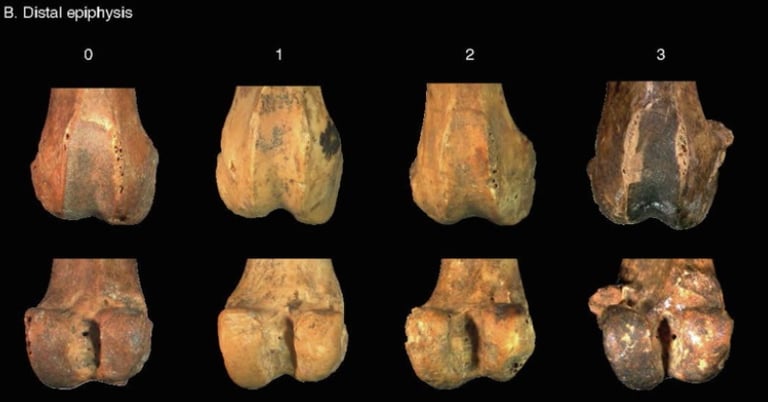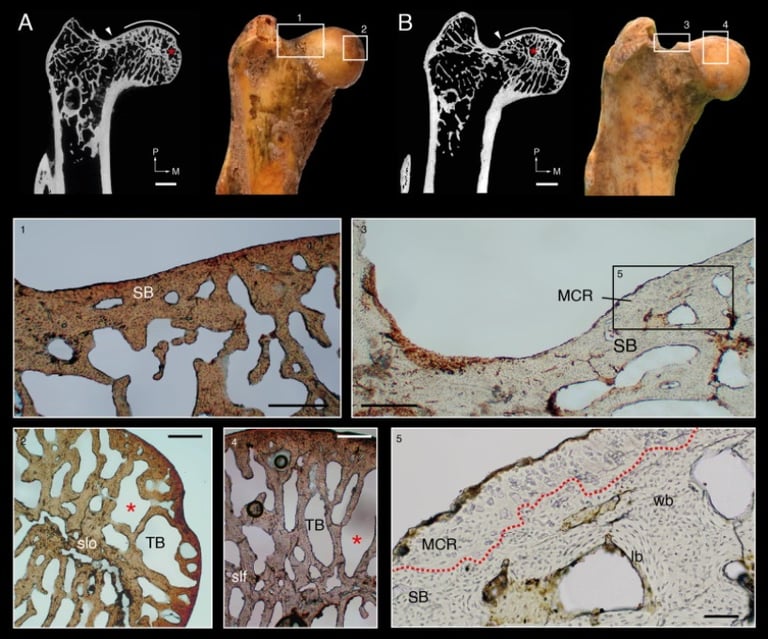
The diseased past lagomorphs
Our study about the osteoarthritic specimens of P. sardus is finally out!
RESEARCH
5/16/20242 min read
The past April, our article about the diseased past lagomorphs from Sardinia was finally out at Palaeoworld journal. Forthwith, you can find a brief summary of this contribution. However, do not hesitate to check the complete publication here.
The study of diseases in the deep time may discern novel biological details about extinct taxa (e.g., of their immunology, physiology, life history, behavior, and inter- and intraspecific relationship, among others.). With this in mind, we decided to study how past lagomorphs were affected by a pathology that has been reported in all vertebrates (in more or less severity): osteoarthritis (OA). This condition affects vertebrates from the earliest time, and the oldest record of it was observed in a dinosaur from the Early Cretaceous! OA is a chronic, progressive and debilitating degenerative disease characterized by degradation of the articular cartilage.
The study was carried out in a Prolagus sardus population from Medusa Cave (Late Pleistocene; Sardinia, Italy). Femora were assessed for OA signs in their proximal and distal ends; and statistical models were performed to observe the significance of this pathology in the population.
Surprisingly, a total of 27,7% of the femora (mature specimens) of Prolagus sardus had signs of this illness. This is a very remarkable and high value, especially if it is compared with other data (21-26% in domestic rabbits, 20% in domestic dogs, 22% in domestic cats, etc.). The statistical models and literature pointed out the aging (or what is the same: an increased longevity) as the principal cause of this high value.
Prolagus sardus inhabited an insular environment, characterized by a lesser pressure of the predators. The different selective pressures may alter life history traits. Insular small-sized mammals are generally characterized by an extended age at maturity and longevity, and an enlarged adult body size, as well as and increased fecundity and population density. In this regard, our results confirm and reinforce complementary studies in P. sardus life history, providing empirical evidence of the shift towards a slow pace of life.
For details, check the complete publication here or send me an email.
Figure 1. Primary osteoarthritis (pOA) scorings in Prolagus sardus, from the absence of signs (0) to the extreme case (3). Source: Moncunill-Solé et al. (2024), doi: 10.1016/j.palwor.2023.03.004.
CC BY-NC-ND 4.0 DEED.
Figure 2. Histological study done in healthy and unhealthy femora, observing the mineralization of cartilage (MCR) in the latter ones.. Source: Moncunill-Solé et al. (2024), doi: 10.1016/j.palwor.2023.03.004. CC BY-NC-ND 4.0 DEED.
Moncunill-Solé, B., Arzi, B., Filliquist, B., Vapniarsky, N., Zavodovskaya, R., Angelone, C. 2024. The extinct osteoarthritic lagomorphs (Prolagus sardus) from Sardinia (Italy) reveal further evidence of life history evolution in insular domains. Palaeoworld, 33, pp. 504-516. DOI: 10.1016/j.palwor.2023.03.004.
Check the X thread 🧵about the most relevant things of this publication here.




